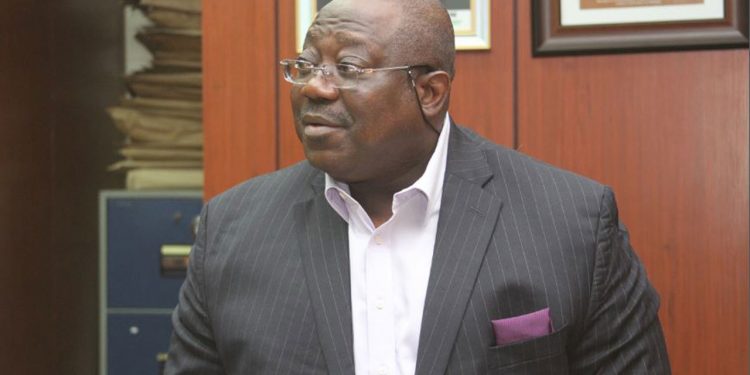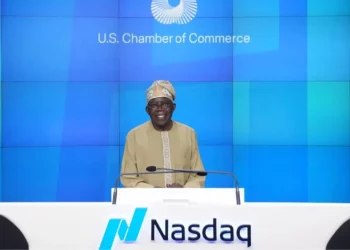In summary, the Oronsaye Report establishes as follows: (i) that there are 541 Federal Government parastatals, commissions and agencies (statutory and non-statutory); (ii) 263 of the statutory agencies should be reduced to 161; 38 agencies should be abolished; (iii) 52 agencies should be merged; and (iv) 14 should revert back to departments in ministries.
After the Presidential Committee submitted its report, the government in turn set up a White Paper Drafting Committee, headed by Mr. Mohammed Bello Adoke, SAN, the Honourable Attorney-General of the Federation, to study the recommendations of the Oronsaye Committee and to produce a White Paper on the Report. When the White Paper was submitted, as was to be expected, the Government on its part accepted only very few of the recommendations, with a larger number rejected and noted.
The findings of the White Paper, when it was finally released for the public in 2014, were greeted by mixed reactions from Nigerians. And most importantly, it was released to a host of national circumstances that proved inauspicious to its implementation.
First, 2014 was just a year away from an election year, and it would be pure political suicide for the government of the day to implement a report that would become a liability for its desire for electoral victory. No government, however its good national intention, needs a power base to be able to facilitate any such good intention.
The Jonathan administration also needed victory in the 2015 general election to be in the kitty first if ever it was to then come back to the implementation of the Oronsaye Report. 2014 was also the year when Nigeria rebased her economy. And following a decade of high-end GDP growth rate, it was not surprising that Nigeria came out of the rebasing exercise as the largest economy in Africa, over her keenest rival, South Africa.
Thus, this was too much of a national news to be upended by the implementation of the Report. The opposite end of this rationalization applies to the Buhari administration in its first incarnation. There was no way a government battling acute economic recession would be willing to commit itself to the recommendations of the Report, despite the fact that the administration was seeking desperately to legitimize itself in the eyes of Nigerians and facilitate efficiency in government business that will institute efficiency and productivity.
In the final analysis, from the government response to the report and the reactions of a cross section of Nigerians, we are drawn back to the characterization of Nigeria as a “hesitant” reformer. In 2005, Professor Ladipo Adamolekun conducted a rigorous interrogation of 29 African countries on their reform activities.
His study revealed that these African countries can be categorized into four groups based on their reform attitudes—the advanced reformers (like Botswana), the committed reformers (like Cameroon), the hesitant reformers (like Nigeria), and the non-starters (like Somalia).
And the re-emergence of the Report at this time of the second incarnation of the Buhari administration is no less inauspicious. While the first administration was marred by economic recession, the bad news now is the ravages of the COVID-19. All across the world, the coronavirus pandemic has undermined the economies of even the most advanced states in the world.
Every country is reeling under the consequences of deaths, infections, unemployment and disequilibrium that the virus has inflicted on humankind. While we might therefore agree that any attempt to consider rationalisation at this period could only add to the pains and suffering of Nigerians who are already undermined by the pandemic, it is also a truism that there is never any good time to implement a lofty reform that has been in the doldrums for many years.
No reform of governance dynamics is ever palatable. And, as the saying goes, it is impossible to eat omelette without breaking eggs. 2020 is therefore as good as any year to implement the Oronsaye Report and we must not fail to compliment the courage of a government that eventually returns to this report in the face of continuing inefficiency in the MDAs and decreasing national productivity.
For any country, and especially for Nigeria, these are terrible times. To say that the Nigerian economy is facing imminent recession is a gross understatement. There is a massive crash of the international oil prices, there is already in place an economic stagnation occasioned by the pandemic.
The country is getting ensnared by mounting external loans in spite of the gloomy fact that twenty five percent of the federal revenue is spent annually on servicing existing debts portfolios. And the foreign reserve keeps getting dangerously depleted.
If the government therefore is not committed to implementing this Report this year to effectively reduce the cost of governance and its burden on infrastructural development and productivity in Nigeria, then there is no other time that will be auspicious.
Report and the larger governance issues
We cannot underestimate the significance of the Oronsaye Report to the recuperation of Nigeria’s productivity dynamics. And it is getting this productivity matrix right that opens the gate for increased infrastructural development that will fundamentally transform the well-being of Nigeria. This is where we have been aiming for since independence.
Unfortunately, I am of the strong conviction that the Oronsaye Report can only do so little to get us to the objective of undermining the cost of governance predicament that has hampered Nigeria’s efficient deployment of her resources for far too long. There are two significant reasons for my conviction.
First, we all will concede that the report is concerned, and rightly too, with efficiency savings at the macro-institutional level (though outside of the administrative dynamics of the core ministries and their relevance to the success of the productivity battle).
This it did by focusing on eliminating redundant and duplicated agencies’ functions through consolidation and/or merger. However, this is a proposal that is not radical sufficiently to undermine the deep waste that had been created by many years of administrative inefficiency.
The report had absolutely nothing to say about the role of the state in national development, and what implications a redefinition of the role of government in managing the development process would have for structure, function and service delivery business model of the entire public service.
All over the world, managerialism and the managerial revolution in public administration and the public service are enjoining a fundamental reassessment of the state and its overlordship in the economy and in governance. Hence, real reform effort begins with re-examining the role the state ought to play in jumpstarting the rapid economic growth.
And that role is basically one of first steering, then regulatory management of the economy that allows both state and non state actors to coexist within the governance space to facilitate developmental dynamics. In the final analysis, the Oronsaye Committee report is at best a first level palliative solution to the deep-rooted cost of governance crisis that bedevils Nigeria. It is only a critical first step.
At another systemic level, the Oronsaye report fails to speak to what would be a most significant institutional and economic consequences of rationalisation. Whether we are prepared to face it or not, institutional rationalisation carries the burden of redundancy management that often comes with the pain of retrenchment and downsizing. Even if, for the sake of the politics, the Oronsaye Report is limited to targeting overhead cost and payroll saving to facilitate a no-job-loss-palliative.
Yet, such an option cannot escape the cost of human-induced redundancies and attendant inefficiency in capacity utilization and associated productivity challenges. The merger-acquisition undertakers’ dynamics to implementation of the report will no doubt lead inevitably to the terrible burden of payment of severance packages which will be huge and unaffordable.
And we do not need any seer to tell us how non-payment will be met with a further undermining of the productivity dynamics through the reactions of a trade unionism founded on an adversarial industrial relation that see the government and management teams as enemies.
Yet, no one can grudge trade unions the case they make on behalf of their members. When the public service downsizes, it brings untold hardship to those who have always been public servants all their lives, and hence had nothing else to fall back on when they face retrenchment.
A government cannot irresponsibly raise hopes of helpless people through reckless unplanned employment contracts, only to wake up overnight to want to throw people with a life into the cold without reasonable cover.
And, from the tragic example of the civil service purge of 1975, government is not always ready and prepared to put together a post-retirement package that will help those affected by the downsizing to regain some level of dignity, and that will satisfy the trade unions on behalf of their members.
Beyond the Oronsaye Report … holding the Reform Bull by the Horn
Let me reiterate: the Oronsaye Report is a solid and perspicacious first step on the way to an efficient unravelling of the cost of governance predicament Nigeria has been battling with since independence. And the bravery of the Buhari administration should be acknowledged for deciding to go through with this first step in cleansing the Aegean stable of an inefficient government business mechanism that has consistently failed to meet up with Nigeria’s productivity challenge.
However, to get to the core of the issue of the cost of governance is to go all the way rather than half of it. There is therefore an urgent need to go beyond a superficial step towards a more systemic, systematic and scientific framing and diagnostic understanding of the crisis.
And there are several administrative and governance ways to go about this. In other words, there are several administrative, legislative and constitutional things that will enable the government put the Report in proper perspectives within the governance framework of the Nigerian state.
Reform is a delicate business that becomes complicated and messy if not properly placed in significant contexts and significantly sequenced in ways that will eventually lead to the achievements of the set objectives and targets. Two contextual reform issues are important for the government to note.
First, any haphazard implementation of the mergers, acquisition and eliminations recommended by the Oronsaye Report, if not properly managed, will result in deepening the crisis of a virtually collapsed and already fragile administrative system.
To underscore this point, we only need to turn our attention to how the structural adjustment programme undermined critical administrative structures, processes and institutions when it was uncritically implemented by overzealous reformers. I need not cite more than the destruction of the architecture of administrative statistics to buttress my point.
All public servants just woke up one day to witness a brutal cut in the budget head for the essential printing and publication of basic administrative instruments—the weekly gazette, annual statistical digest, annual sectoral statistical bulletin, federal staff disposition list, public service annual reports, etc.—when the government printing press was privatized.
One could easily see the terrible effect of this on the structure of administrative statistics in a pre-Internet period. Thus, reform cannot be carried through to success on the basis of mere passion that is not undergirded by strict knowledge of actions and consequences.
Government must therefore begin to think of a functional consultancy support, with strong expert public sector competency handholding to foreclose the usual conception-reality gap in the dynamics of change management that undermined implementation of past reforms; and to tame the unbridled passion that will attend the implementation of the Report. Such a consultancy service will bring the implementation within a saner purview of change management that will align the implementation to final objectives in functional review.
Second, there will be attempts to hijack the Oronsaye Report from reaching its full implementation desirable outcomes and potentials. This is a logical implication of situating fundamental reform measures within a context of an already corrupted governance space. Parochial and prejudiced interests will always be available to stifle the full impacts of the Report.
The reform experience of other countries provides the insights that will enable the government to enlist the support of eminent administrator, civil society organisations and other credible individuals to facilitate the implementation and success of the Report.
For instance, for Margaret Thatcher to ensure the success of the UK managerial reforms in the 1980s, she appointed Lord Rainer, chairman and CEO of Mark and Spenser as the lead reform figure. There is no point in grabbing the reform bull by the horn if we are not ready to wrestle it to the ground to get what we want.
Once the context of corruption is factored into the eventual success of the reform, we can then begin to unravel the fundamentals of implementation. And the first order of business is that the government need to understand the significance of constitutional legislation in grounding of the recommendations of the Report.
Fundamental changes, of the type required not only by the Report, but by the reform of government business, requires firm legislation to give them legal teeth to be able to achieve what they are meant to achieve.
For instance, there is an urgent need to kick off with several constitutional amendments that produce immediate hanging fruits, like abolishing the state sponsorship of religious pilgrimages, a very drastic reduction to the number of ministries presently functional, the need to urgently reduce the vast numbers of personal aides that attend the executive and legislative arms of government, or even an amendment of section 147 of the Nigerian Constitution that gives the president and governors powers to appoint ministers and commissioners from the 36 states plus FCT at federal level.
The second level of deeper constitutional interrogation requires a series of scientific reviews that probes very deep into the constitutional context to examine the cracks and fissures that have undermined the capacity of our democratic governance system to rise up to the challenge of development.
I am talking about the outrageous economics of a non-developmental federalism that uncharacteristically spread its scarce resources very thin over wasteful administrative redundancies spread across the federal, state and local government areas.
Nigeria’s presidential system constitutes one of the most uncreative, expensive, wasteful and unproductive in the world. And it is only at the larger constitutional level that legislation can be provided to ease the way for the entrance of the Oronsaye Report as a significant mopping strategy that keys into the legislative dynamics.
The grand objective of the Federal Government is to achieve a productivity paradigm shift that is founded on transforming the business model of government business dynamics through a modernizing reform project that essentially undermines wastages, redundancies and leakages.
This requires a massive shakeup of the bureaucratic model of the MDAs in such a way that demands a productivity audit that will sharpen the focus of ministries and other governmental structures on the achievement of key governmental goals and priorities. Such an audit will certainly be founded on key elements of change management that requires behavioural and attitudinal cultural changes.
And this is exactly where the implementation of the Oronsaye Report becomes an iterative reform framework that will deliver increasing benefits over time in terms of efficiency and effectiveness gains of the MDAs and their productivity capacities within framework reinforced by a culture change programme for which there are adaptable templates that could be quickly calibrated.
In its iterative significance, the Report will help to determine the very important issue of phasing and sequencing of implementation, which must ensure a timely alignment of fundamental reallocation of resources between and within agencies with appropriate points in the budgeting cycle.
The whole of the Oronsaye Report, within the foregoing constitutional and legislative context, can then become wrapped in a scientific administrative procedure and processes to achieve profound governance objectives. Government must necessarily specify, through deliberately determined analytics and administrative metrics, the efficiency saving targets that the national economy urgently optimally requires from all the MDAs across the sectors that could be realistically and sustainably extracted as total budget saving percentages.
It can only be on the strength of these targets that the ministries and agencies already implicated by the Report can be asked to proceed to developing reviews and rationalization plans. These administrative feedbacks will enable the government to articulate a performance improvement plan and a framework of cost of governance reduction measures on three critical fronts: (i) identified expenditure reduction proxies; (ii) leverages for increased efficiency in government day-to-day operations; and (iii) measures to strengthen accountability frameworks.
A successful implementation of the Oronsaye Report also depends crucially on the need to conduct a rigorous public expenditure review (PER). The results of such broad PER will then be utilised to determine new budget ceilings for each ministry and agencies within a medium-term expenditure framework.
Each ministry and agency is then compelled to undertake functional reviews to achieve a range of objectives: i. provide assurance that the determined budget ceiling for the ministry can be achieved without jeopardizing achievement of other key government priorities and objectives; ii. provide a framework for contingency planning to alter the magnitudes of previous budget targets of revenue benchmark and projection due to budget allocation changes; iii. deliver business plans for policy effectiveness in spite of budget changes; iv. redesign the structures and manning levels for greater organizational and operational efficiency; v. identify areas of expenditure reduction to achieve the efficiency saving targets; vi. recalibrate programmes, projects and KPIs in ways that allow some activities to be reduced, some totally eliminated, and others especially similar ones consolidated into firmer operational frameworks; vii. process redesign to automate some processes would have been achieved; and viii. determine non-core services and activities for outsourcing to free up the efficiency space for the achievement of the core mandates of the ministry and agency.
I will conclude with a reiteration of a fundamental point I made earlier. On the heel of the implementation of the Oronsaye Report, government urgently needs to commence an employability training programme as part of a larger post-retirement package that will place public servants within five years of retirement or less within a framework of social security scheme.
We cannot underestimate the critical importance of this measure. Wastages and leakages are often the function of the manpower loss due to trade unionism and the adversarial industrial relations we mentioned earlier. And a fundamental dimension of the grievances of the trade unions is that the retirement deals offered most public servants eventually throw them out in the cold, and even under the bus once they leave service.
No one can argue with the logic of making the post-retirement lifespan of public servants one they can step into with dignity. The Oronsaye Report will eventuate into downsizing and the pains that come with it. The government should remember that we cannot care too much for the system at the expense of those who will make the same system efficient.
The lesson of the 1975 administrative purge is simple: if we maltreat those retiring or affected by any inevitable downsizing of the system, those still functional within it will learn negative lessons that will undermine the system itself. A post-retirement package therefore is an efficient and irreducible move to instil patriotic professionalism into a workforce for effective performance and productivity.
This article is written by Tunji Olaopa and was published in TheGuardian. Tunji Olaopa, is a Nigerian political scientist and public administrator. He is the Executive Vice Chairman of Ibadan School of Government and Public Policy, Bodija, Ibadan and a Professor of Public Policy at the Lead City University, Ibadan, Oyo State.












